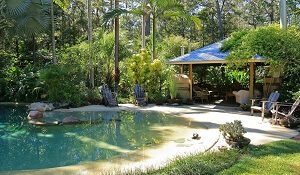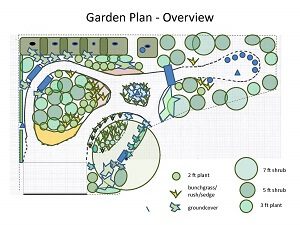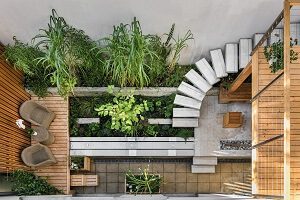Plan a DIY landscaping project in just a few easy steps
Backyard design doesn’t have to be complicated!
No matter an individual’s preference it truly comes down to the design, thinking and execution of a landscaping project plan. It can be fairly easily accomplished, as long as a person is willing to put in some work ahead of time planning it out, and then bring that backyard landscape design to reality.
Our free Backyard Landscaping eBook is a great guide to turn your backyard into a relaxing haven.
Understanding waste types is important bfore hiring your skip. Check our guides:
Why re-design a backyard?
You should consider a backyard re-design if you are trying to add value to your home or if space doesn’t have any functional use or even existing design.
Changing over from grass to some type of landscaping means potentially less maintenance when it comes to weekly mowing. On the other hand, more trees could translate to more shade during warmer months, potentially shaving significant costs from the AC bill.
A re-design could also help a backyard with drainage issues, add some dimension and even create a personal space if the property backs right up to a neighbour.
Taking the first step
Before any DIY landscaping plan can get started, though, it’s important to have a good grasp on the space in question.
Measure, measure, measure!!!
This means measuring out the area and pinpointing some of the key features that already exist, and the key features you may want in a finished product.
Measurements are key. Hold the measuring tape tight and double-check all of the numbers. One bad measurement could throw off an entire landscaping project.
Coming up with a landscaping plan
Before moving any dirt or tearing up any existing green waste, the very next step needs to be producing some type of landscaping plan document. This really is important because the document acts as a floor plan of sorts for the outdoors, helping a person understand everything that’s needed and how to best design space.
While a DIY landscape design could mean just a simple sketch, thanks to technology it’s never been easier to create a landscaping plan. It can be used to add in grass, trees and flowers, plus even things like sheds and lighting, all to scale. Having a plan makes it easier to visualize the big picture of a finished design, and even see what’s missing.
Start by coming up with a budget, gathering a few ideas of what’s possible both online or at a local gardening centre, and then coming up with an itemised list of some of the most desired features.
Step 1: Make a basic outline
Mark out the space that’s going to be part of the finished design.
Step 2: Add features that are staying
Do you have any poles, large rocks or anything else that’s not going to be cleared out of the yard? This is also the time to designate places in the yard that get the most sun or the most shade throughout the day. This will help in planning out the types of plants or trees to acquire.
Step 3: Add ground cover
This could be done by adding grass, cement, rocks or even a combination of landscape products.
Step 4: Add new landscaping
On this step you designate areas for flowers, trees and shrubbery, in addition to possible walkways, fountains, gazebos or anything else desired in the landscaping project plan.
A DIY landscaping design could also mean; adding new decking to a backyard, adding in the room for built-in seating, putting down some pavers or adding in some texture and colour to the plan with decorative rocks or flowering plants.
What to plant
Native plants obviously grow best in Australia, so look to add plants, trees and grasses that are local to a particular area. They don’t have to be expensive, but they do need to be hardy enough to withstand the seasons.
This is also the time to consider the soil and other conditions. It’s important to find plants or trees that thrive in different weather conditions and can work well in a particular space. Is there an already existing issue with standing water or run-off? It’s possible to work around these types of issues with certain types of ground cover or even placement of specific items.
For example, pinpoint the areas with lots of sun or lots of shade during the hottest times of the day. This can help determine what to plant in shade, a mix of shade and sun or even full sun. For example:
• Roses/herbs need full sun
• Many bedding plants need hours of sun
• Some flowers/succulents prefer shade
Looking at the wind patterns in a backyard space could also impact a design, especially if a person desires adding a fire pit to the redesign. Though for obvious reasons this can be difficult to plan and map onto a design.
For more helpful information download our Backyard Landscaping Guide.
More garden tips on our blog page:
Archives
- July 2024
- May 2024
- October 2023
- September 2023
- March 2023
- February 2023
- September 2022
- August 2022
- July 2022
- June 2022
- May 2022
- April 2022
- February 2022
- January 2022
- December 2021
- November 2021
- October 2021
- September 2021
- August 2021
- July 2021
- June 2021
- May 2021
- April 2021
- March 2021
- February 2021
- January 2021
- December 2020
- November 2020
- October 2020
- September 2020
- August 2020
- July 2020
- June 2020
- May 2020
- March 2020
- February 2020
- January 2020
- December 2019
- November 2019
- October 2019
- July 2019
- April 2019
- March 2019
- February 2019
- September 2018
- June 2018
- February 2017


